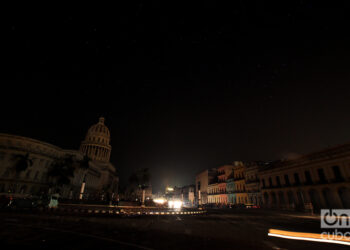Telling the story of men and a context, either from fiction or closer to reality, has been, for a long time, one of the great values of the theater. Cuba has traditionally had important figures in the scene. This time, amid the sweltering summer heat, theatre lovers had the opportunity to enjoy the revival, by “Teatro del Sol” company, of the play “La Catedral del Helado”, first dramatized version of Senel Paz´s anthological tale: “El lobo, el bosque, y el hombre nuevo. “
The group led by Sarah Maria Cruz returned with this touching play to its natural stage: Havana, after a successful tour of 14 countries, mainly in Europe.
It has been 22 years since this play was presented to the public, and now its protagonist, Joel Angelino, gives life again, in the mansion of Linea Street, to the monologue that inspired Tomas Gutierrez Alea (Titon) and Juan Carlos Tabio, in 1993, to make “Fresa y Chocolate”, one of the most notable films in the history of Cuban cinema.
This magnificent work , inspired in a story that won the Juan Rulfo Award, was born in 1991 in the middle of what Cubans called “Special Period”. In this context, much of its success was conditioned by exposing the homophobic tendencies of Cuban society from the open dialogue established by Diego, a homosexual with religious beliefs, an admirer of Lezama Lima, and David a young communist student. The meeting between them occurs in Coppelia ice cream parlor, known as “Ice Cream Cathedral”. This leads them to a complex world of relationships which mixes friendship and passion.
Back then, the play, scheduled for two weeks in Bertolt Brecht Theater, remained for three months. At that time, and also now, the performance of Angelino, who won the 1995 Grand Prix in the International Festival of Lugano, Switzerland, due to his performance in this play; provoked emotions and applause. New generations had the opportunity to observe, through the original actors, the dramaturgical resources that led the transcendence of this unique stage adaptation.
Joel Angelino, through monologue and body work, together to movements in the scene, starred both characters: David and Diego. Cleaning in gestures, the effectiveness of his performance during transitions and the minimal character of the scenery accentuated the most dramatic moments of the text. The lighting design was also instrumental in supporting the link between the actor and space, as well as the element to highlight climatic moments of the story.
Angelino tells, from the solitude of a small stool on a floor full of cut papers, a difficult fragment of Cuban history. His passion and identity when representing this classic of Cuban fiction, cinema and theatre was confirmed when he played the character of the sculptor (Germán) in the film, and can be appreciated again between the lights and clouds of smoke in the mansion (La Casona) of Linea Street. Angelino’s acting skills can be enjoyed again in the month of December, when coupled with the renowned Cuban actress Mirta Ibarra, who also worked in the film adaptation, in the play “Neurótica anónima”.










